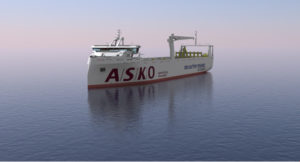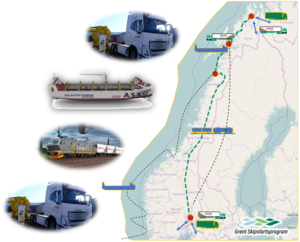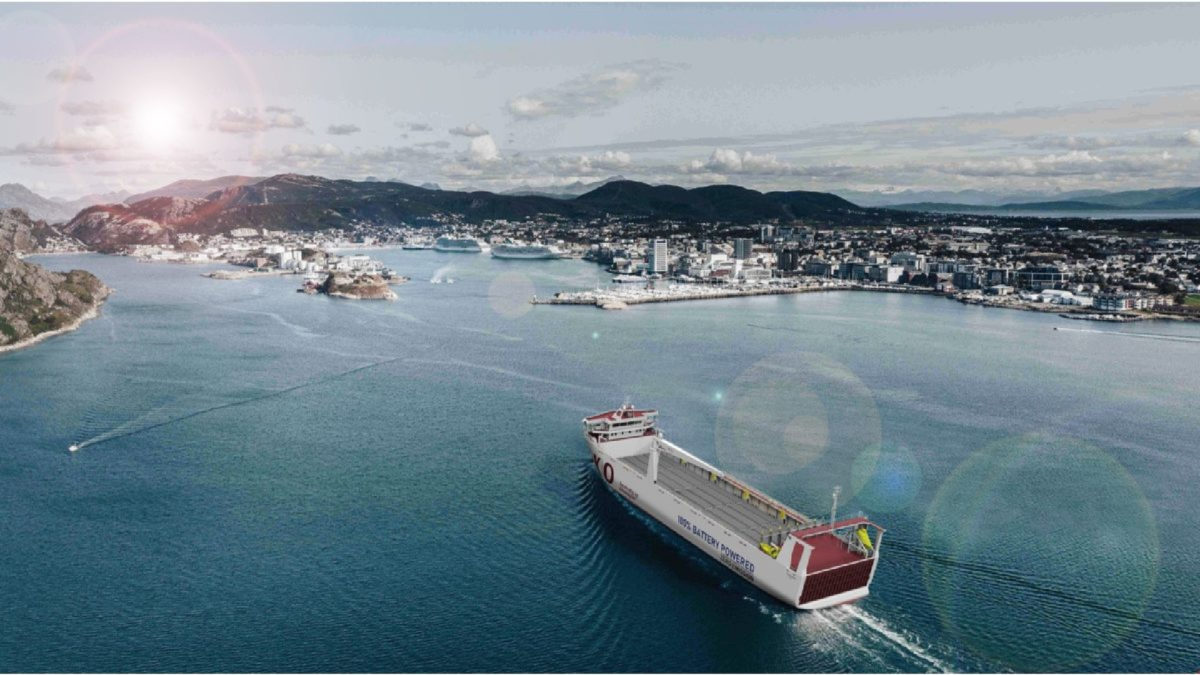Background
There has been a significant growth in the volume of goods over the past decades. The increase in unit loads has largely been road-based, leading to a marked rise in the number of trucks on the roads. Current transportation solutions, as well as terminal and warehouse structures, are also characterized by this development.
Both in Norway and overall in Europe, this has posed major challenges with respect to increased road traffic, noise, accidents, local pollution, and greenhouse gas emissions. Increased utilization of maritime routes through efficient multimodal solutions can help address some of these issues.
Norway, with its elongated geography, requires effective transport routes both domestically and towards European markets. Transit times and carbon footprints pose challenges.
A maritime connection between Bodø and Tromsø has significant potential in reducing emissions and cutting road kilometers on challenging routes. This sea route also provides the opportunity to establish efficient logistics solutions and the use of zero-emission trucks in and out of ports. The connection will enhance the green capacity between Northern and Southern Norway.
ASKO Maritime plans to establish a commercial, emission-free sea route between Bodø and Tromsø in Northern Norway from 2027.
The route will have daily departures and will correspond with the railway from Southern Norway, for example relevant for retail goods going north and fresh fish going south.
Two battery-electric combined ro-ro/container ships will service the route, with charging at each port call.
This sea route is intended to be part of a sustainable transport network combining sea, rail, and road in a green transport corridor that links Northern and Southern Norway, transporting trolleys (semi-trailers for trucks), containers, and project cargo in an intermodal network without emissions.
A green shipping corridor is defined as a maritime route with zero emissions between two or more ports. “Zero emissions” covers all carbon-neutral fuels that can be used in green shipping corridors.
(ASKO already operates two sea drones between Moss and Horten, in a green and soon autonomous shipping corridor.)
This pilot expands the focus to cover the entire transport corridor door-to-door. This typically involves entering and exiting between port and starting/ending point with a truck, sea transport between ports combined with rail between port and rail terminal. By emission-free transport throughout the entire value-chain, this can be defined as a green transport corridor.
The pilot will examine:
• What is required to establish a green transport corridor combining sea, rail, and road?
• Which actors are necessary for such corridors to be realized?
• What is the role of authorities as facilitators, supporters, and regulators?
• How can the green corridor be realized?
In the “Logistics 2030” project, twenty cargo owners collaborate with other logistics actors to establish a sea-based logistics and terminal structure for unit loads between Norway and Europe. Knowledge and experiences from this project will be utilized in the pilot.
The overall goal of the pilot:
To realize a green transport corridor between Northern and Southern Norway, and potential further connection towards continental Europe.
Pilot study objectives:
• To map and describe a green transport corridor door-to-door between Northern and Southern Norway (Tromsø-Oslo), and if possible, to Europe (Rotterdam?).
• To clarify which actors and functions are necessary to realize the green corridor.
• To define the role and tasks of authorities in facilitating green corridors for achieving climate commitments and as a mechanism for accelerating the green shift.
• To lay the groundwork for green corridors to become an effective tool in realizing an accelerated transition to sustainable transport solutions and necessary infrastructure in Norway.
Final goals of the pilot:
To achieve zero-emission transport between Northern and Southern Norway.
A sea route between Bodø and Tromsø is part of this comprehensive green corridor.
The northern sea route will be operated by two 117 m long, battery-powered combination ships capable of loading dollies and containers, aiming to be operational by 2027.

However, just as crucial for the realization of this pilot is that trains and trucks operate emission-free. This applies to the long distances that are part of this comprehensive corridor between the north and the south, as well as for local transport along the corridor.

[1] Clydebank Declaration, 2021: “zero-emission maritime routes between two (or more) ports”, https://www.gov.uk/government/publications/cop-26-clydebank-declaration-for-green-shipping-corridors/cop-26-clydebank-declaration-for-green-shipping-corridors
Status
April 2024
A mapping of the desired participation of more interested participants is being carried out. ASKO is the pilot owner.
Please contact ASKO or DNV if interested.
October 2024
The pilot is working closely with the ports along the corridor north of Bodø and the railway for the section south of Bodø to achieve the pilot’s goal: to offer zero-emission freight transport from north to south.
The pilot has defined the following work packages:
- Market
- Transport corridors and actors
- Environmental/climate and socio-economic benefits
- Instruments and measures
- Compilation
In parallel, the pilot is also working on the specification of the vessels and potential shipping companies that can own and operate the vessels.

